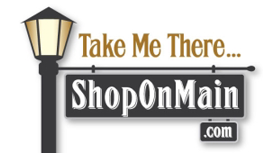Choosing Where To List Products

As we discussed last article, listing products for sale in as many places online as possible will help bring new customers in your door. Plus, you’ll add a stream of income that could help your business weather upcoming storms.
Your options when listing products for sale online are slightly more daunting than choosing social media platforms. Because here, you’re much more likely to have to invest time and money to make it happen. This is going to take a bit more focus as you determine which avenues are beneficial and worth the investment. But as we said before, the upshot is you want to be listed on as many platforms as you can manage, both financially and time-wise.
Your options include:
- Your own website. Offering your products for sale on your own domain (yourbusiness.com) seems like the logical place to start. And indeed, this is the one place you’re 100% in charge of the message and branding, so that’s a plus. The negatives, however, can be pretty steep. Mainly, ecommerce software (a “shopping cart” system so that people can check out and make the purchase on your site) can run you a few thousand dollars. Also, it’s going to take a lot of effort to get shoppers to your page.
In many ways, your website is the internet equivalent of locating your physical store on the outskirts of town, all alone on a country road. Sure, you can get people to come there but it’s going to take some doing. Does that mean it’s not worth it? Of course not. If you have the money for ecommerce software, you should definitely take advantage of the one place where you can completely control your message. Just don’t expect that to be the end of your internet strategy.
- Webstore Services. Places like Shopify or Squarespace allow you to build a webstore without spending big money up front for ecommerce software. Here, you’ll spend anywhere from $30 – $100 per month to DIY your webstore. Rather than having complete freedom (and needing a web designer) over the look, you’re able to customize pre-exiting templates. Learning the system and creating your page can sometimes be time consuming. Still, this is a much more affordable option for businesses who don’t have $2,000 – $5,000 just laying around.
- Portal Sites. A portal site is a single website that brings together multiple sellers and businesses. These include places like Amazon, Etsy, even Ebay. (And of course, ShopOnMain). The main advantage to listing your products on these sites is that shoppers go there to shop – you’re not interrupting them or trying to lure them to you. They’re already there, looking to buy something. So it seems like a no-brainer that you’d want your stuff on as many of these platforms as possible.
However, there are a few downsides to portals. Most have a monthly fee you have to pay whether you sell items or not. All have some sort of transaction fee on each purchase to cover the cost of encryption and other transaction-security measures. (So you don’t have to worry about your customer’s data being stolen.) Of course, even if you’re taking orders on your own website someone is going to charge you a fee to process each transaction.Each site varies on how much branding they’ll allow you to do. Amazon, for example, doesn’t always make it clear who a shopper is purchasing from, and doesn’t allow you to place items or information in the box to try and get repeat business, either. (Of course, since they’re currently the “top dog” many merchants use them anyway just for the extra stream of income. More sales – even if you can’t make them repeat sales – is often well worth it.)
Our recommendation is to list your inventory on as many of these sites as you can afford. It can be time consuming, yes. However, once you get everything up on one site you can often export your inventory list and upload everything at once to other sites.
As mentioned before, the more products you list and the more places you list them, the more likely a brand new potential customer is to discover you when they’re in the market for something you sell. And this will lead to new feet in your door.
How does that work? Find out in our next article…
